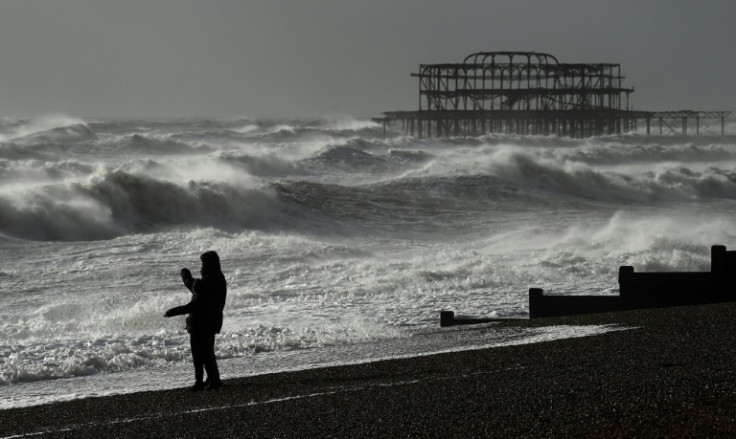Storm Ciarán Warning: Flooding Hits Northern Ireland with Amber Alerts in Effect
As the Met Office's amber warning for rain came into effect at 9pm on Monday, much of the south-eastern region of Northern Ireland found itself under siege from heavy rainfall.

As Storm Ciarán approaches the United Kingdom, Northern Ireland is grappling with severe flooding.
An amber rain warning has been issued by the Met Office, urging residents to exercise extreme caution and avoid unnecessary travel. This comes after Storm Babet wreaked havoc in several areas of the United Kingdom, leaving them submerged in floodwaters and claiming the lives of several people.
It also follows the impact of Storm Agnes, which struck the region in September 2023, with wind gusts of up to 80mph experienced in some areas.
Northern Ireland, especially in the southeast region, has been hit by relentless rainfall, causing significant flooding and posing serious risks to public safety. Counties Antrim, Down and Armagh are under an amber warning, which came into effect at 9pm on Monday and extends until 9am on Tuesday. The Met Office predicts that the persistent heavy rain will result in further flooding and significant disruptions in transportation.
Across the UK, the Environment Agency has issued more than 70 flood warnings in anticipation of the arrival of Storm Ciarán. In addition, yellow weather warnings for rain have been issued by the Met Office, with gusts of up to 80mph expected along the south coast of England.
Southern and western areas of the UK are likely to experience 20 to 25mm of rain, with up to 40 to 60mm anticipated in higher ground areas.
The flooding situation in Northern Ireland worsened on Monday when the canal in Newry, Co Down, burst its banks, leading to extensive flooding in the area. In various parts of the region, roads have been closed due to flooding and in Dromantine, Co Down, approximately 100 sheep had to be rescued after becoming stranded in a flooded field. The Met Office warns that Northern Ireland can expect between 25mm and 50mm of rain, with up to 100mm possible in higher ground areas.
Officials from Stormont's Department for Infrastructure, as well as the Police Service of Northern Ireland (PSNI), have strongly urged people to stay at home during the period the amber warning is in effect.
They have also advised those who must travel to exercise extreme caution and to consider the potential risks before leaving, as excess surface water could lead to aquaplaning and reduced visibility. The saturated ground and high river levels from the preceding heavy rainfall increase the risk of further localised flooding.
Storm Ciarán follows in the wake of Storm Babet, which caused substantial damage and led to multiple fatalities in Scotland and northeast England. Met Office Deputy Chief Meteorologist Chris Almond warns that heavy and persistent rain falling on already saturated ground poses a risk of further flooding in areas struggling to recover from the previous week's rainfall.
As residents in Northern Ireland and the UK brace for the arrival of Storm Ciarán, public safety remains paramount. Along with the possibility of road closures and travel disruptions, residents are urged to stay updated about the latest weather updates and to take precautions to minimise risk during this challenging weather.
In addition to the immediate impacts of the storm, the resilience of local communities is being tested as they grapple with the consequences of prolonged wet weather and increasingly severe storm systems. The authorities continue to monitor and respond to the evolving weather patterns and will provide further instructions and advice through official channels.
Jersey islanders have also been warned to remain vigilant amid 90mph winds expected to batter the region as Storm Ciarán approaches the UK. The Met Office has issued a "danger to life" warning for Northern Ireland, and floodwaters could potentially cut off communities for several days.
As Storm Ciarán's arrival looms, it is clear that the United Kingdom and Ireland are facing a challenging season of extreme weather events. The combination of Storm Ciarán, the aftermath of Storm Babet and the effects of Storm Agnes is a stark reminder of the need for robust disaster preparedness and resilience measures in the face of changing climate patterns.
© Copyright IBTimes 2024. All rights reserved.






